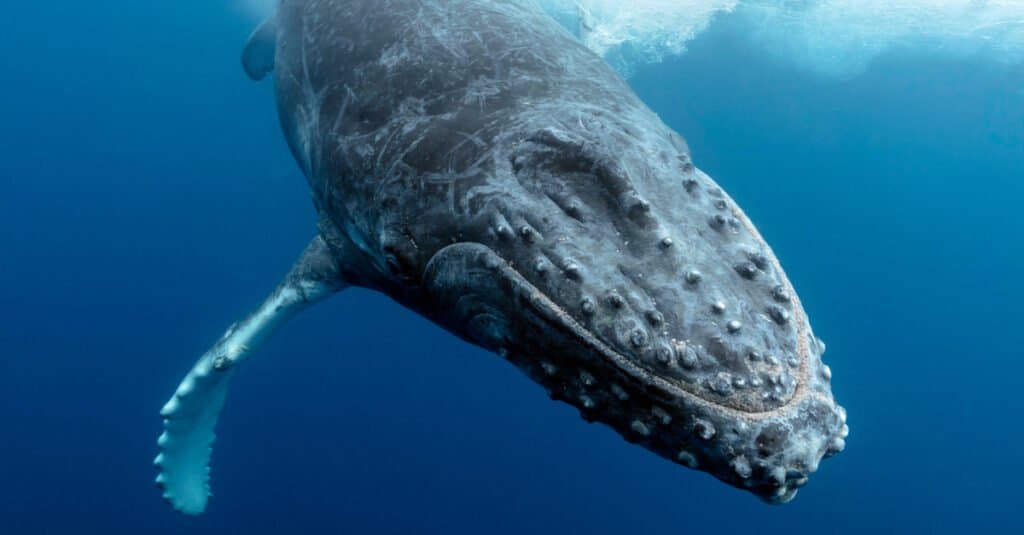Navigating around a marina can take quite a lot of skill, but one obstacle you don’t expect to have to sail around is a humpback whale! This extraordinary clip shows the whale cruising past the berths in Southern California’s Ventura Harbor. It may look like a wonderful sight in the aerial drone footage, but this sea creature was in trouble. It had got stuck in the harbor and had no idea how to get out. However, this story has a happy ending. We learn from the video notes that it was later lured back out to sea using underwater broadcast whale calls.
Watch the Magnificent Sight Now
Where Do Humpback Whales Normally Live?
Humpback whales (Megaptera novaeangliae) are ocean creatures that are found in polar and tropical waters. They get their common name from their habit of rounding their backs when diving. You may spot them in the Atlantic, Arctic, and Pacific Oceans. However, some are also seen in the waters surrounding Antarctica. They spend most of their time in deep oceanic waters, but as you see in this clip, they sometimes venture closer to the coast.
How Do Humpback Whales Normally Behave?
This is a migratory species of whale. They travel between northern and southern latitudes according to the season. They spend spring, summer, and fall in colder waters but spend the winter near shallow, tropical banks. It is during these migrations that they move through coastal waters and are most likely to be spotted from the shore.
Because they live in groups, they can also be found in large numbers on shallow banks. They are also found in large groups in subarctic waters during the spring and summer.
What Do Humpback Whales Eat?

Baleen whales, like humpbacks, feed by filtering seawater for food.
©Craig Lambert Photography/Shutterstock.com
Humpbacks are baleen whales and are generalist feeders. They move around a lot, looking for food, and take their opportunities to feed wherever they can. Their diet consists of plankton and fish. The exact fish species, however, varies by location. For example, humpbacks in the eastern North Pacific feed on atka mackerel, but those near Cape Cod feed on sand lance, herring, and pollock.
To feed, the whales open their large mouths, taking in water and food. The ventral grooves in their throat allow them to take in large volumes. Then, they shut their mouth, and the water is forced out through the baleen plates. Plankton and fish stuck on the plates are swallowed – helped along by the tongue!
The photo featured at the top of this post is © Mircea Costina/Shutterstock.com
Thank you for reading! Have some feedback for us? Contact the AZ Animals editorial team.







